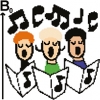Articles
The prediction of 1H NMR chemical shifts in organic compounds
Raymond J. Abraham and Mehdi Mobli
Chemistry Department, The University of Liverpool, PO Box 147, Liverpool L69 3BX, UK
Olive oil as seen by NMR and chemometrics
Luisa Mannina,a,b Anatoli P. Sobolevb and Annalaura Segreb
aUniversity of Molise, Faculty of Agriculture, 86100 Campobasso, Italy
bInstitute of Chemical Methodologies, CNR, 00016 Monterotondo Staz., Rome, Italy
Superconducting magnets: at the heart of NMR
Alan Street
Technical Director, Oxford Instruments Superconductivity
NMR: still listening to whispering hydrogens? What else do they tell us 50 years after their discovery?
It is now more than fifty years ago that Felix Bloch and Edward Mills Purcell independently discovered a phenomenon called nuclear magnetic resonance (NMR). Only a few years later, in 1952, both received the Nobel Laureate Physics award for this discovery. Purcell and Bloch were the first to “listen” to the whisperings of hydrogen. They eventually obtained an NMR spectrum representing the different “pitches” of the nuclei, a property, which reflects the physico–chemical (electronic) neighbourhood of the nucleus.
900 MHz nuclear magnetic resonance shows great promise
A stage in the ever-increasing magnetic field strengths in NMR spectroscopy.

